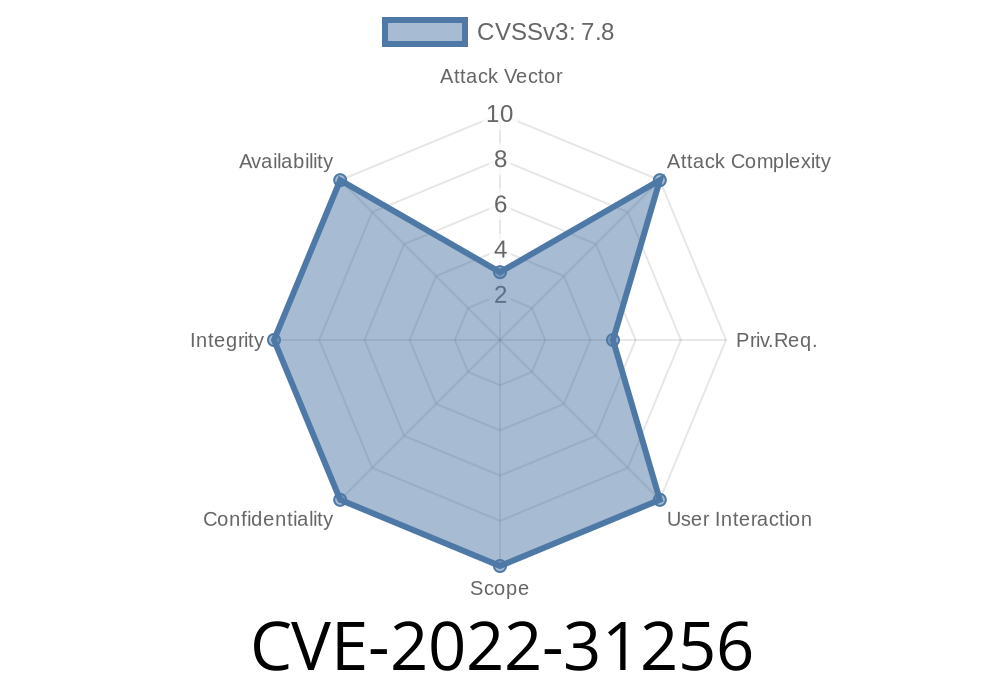CVE-2022-31256 is an important security issue that has been discovered in openSUSE Factory's implementation of the sendmail systemd service. The vulnerability can allow local attackers to escalate their privileges and gain root access on affected systems. This can potentially lead to unauthorized access to sensitive information, disruption of service, or other malicious actions. This post will provide an overview of CVE-2022-31256, including details of the vulnerability, code snippets, and links for further reading.
Vulnerability Details
CVE-2022-31256 is a flaw that affects the sendmail systemd service in openSUSE Factory. Specifically, the vulnerability exists in a script that is called by the sendmail service. This script is vulnerable to what is known as an Improper Link Resolution Before File Access ('Link Following') vulnerability.
The Link Following vulnerability occurs when a script follows a symbolic link (symlink) before performing file access or modification operations. In some cases, this can result in the script accessing or modifying a file that was not intended, potentially leading to unauthorized access to sensitive information or other negative consequences.
Through careful exploitation of this vulnerability, an attacker with local user mail access can potentially escalate their privileges and gain root access on affected systems. This level of access would give the attacker complete control over the target system, potentially allowing them to steal sensitive information, disrupt services, or perform other malicious actions.
Code Snippet and Exploit
The following code snippet demonstrates how the Link Following vulnerability could be exploited by an attacker:
# create a symlink to target file
ln -s /target/file /tmp/vulnerable_file
# execute the vulnerable script with symlink
/usr/sbin/sendmail-service-helper /tmp/vulnerable_file
In this example, the attacker creates a symlink that points to a target file with sensitive information (/target/file). They then execute the vulnerable script, which follows the symlink and accesses the target file, potentially leading to unauthorized access or modification of the target file.
Original References and Further Reading
- CVE-2022-31256 - National Vulnerability Database
- openSUSE Factory - Official Wiki
Mitigation and Remediation
Users of affected sendmail versions on openSUSE Factory should immediately upgrade to version 8.17.1-1.1 or newer. This release addresses the CVE-2022-31256 vulnerability by properly checking for symbolic links before accessing or modifying files.
To update sendmail, run
zypper update sendmail
Conclusion
CVE-2022-31256 is a critical security vulnerability affecting openSUSE Factory's sendmail systemd service. By exploiting the Improper Link Resolution Before File Access ('Link Following') vulnerability in a script called by the service, local attackers with user mail access can escalate their privileges to root, potentially leading to significant damage or unauthorized access to sensitive information. Users of affected systems should update to the latest sendmail version to mitigate this risk.
Timeline
Published on: 10/26/2022 09:15:00 UTC
Last modified on: 10/28/2022 17:49:00 UTC
